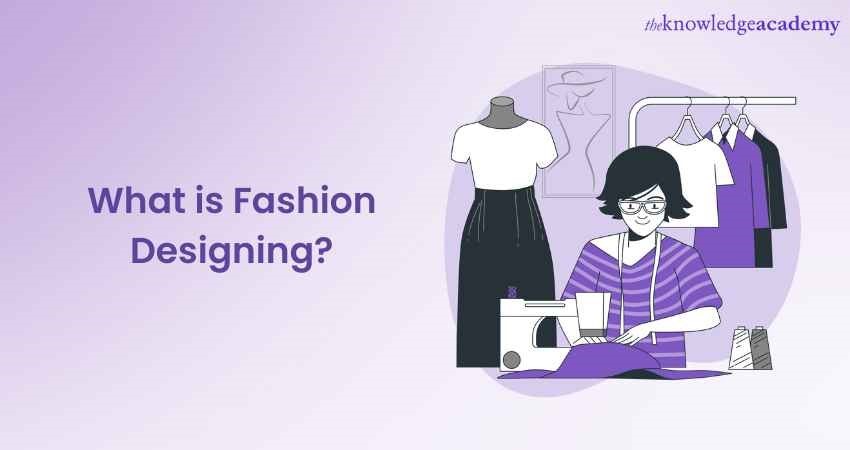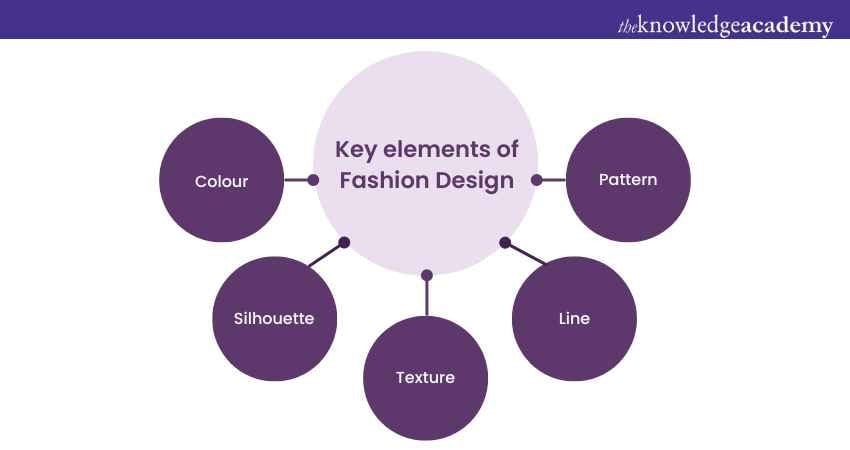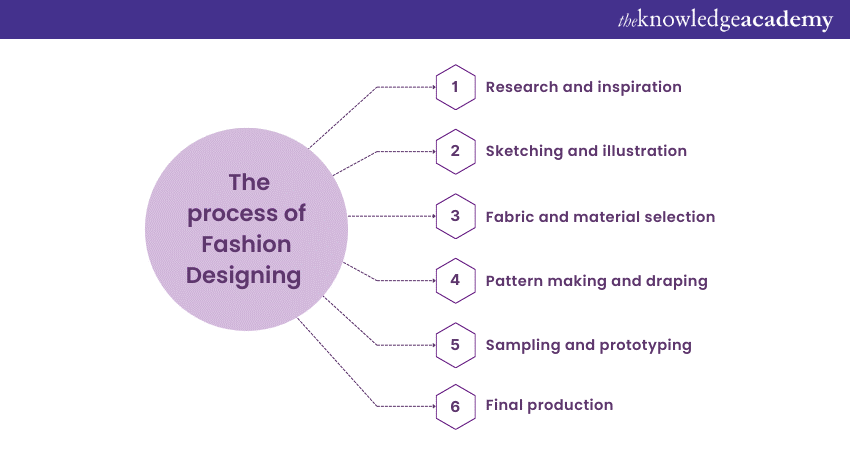We may not have the course you’re looking for. If you enquire or give us a call on +61 272026926 and speak to our training experts, we may still be able to help with your training requirements.
Training Outcomes Within Your Budget!
We ensure quality, budget-alignment, and timely delivery by our expert instructors.

The Fashion industry is a global economic powerhouse. Its intricate supply chains, from cotton farmers to retail giants, impact employment and economies worldwide. By understanding "What is Fashion Designing" and delving into its intricate details, we can make more sustainable and ethical shopping choices.
Today's Fashion is becoming more eco-friendly and responsible as consumers become better informed. Understanding where and how clothes are made can further support this positive trend. In this blog, we will explore "What is Fashion Designing" and provide a detailed overview of various roles within the Fashion industry, offering inspiration for those considering a career in this dynamic field.
Table of Contents:
1) Understanding the world of Fashion
2) The essence of Fashion Design
3) Key elements of Fashion Design
4) The process of Fashion Designing
5) Careers in Fashion Design
6) Conclusion
Understanding the world of Fashion
Fashion is more than just clothing. It's a language, a form of self-expression. Every garment tells a story. Some evoke memories of historical eras; others embody future visions. Fashion transcends borders, connecting diverse cultures and identities. It mirrors society's evolution, reflecting its moods, ideals, and revolutions.
Street corners turn into runways as ordinary folks become daily Fashion icons. It's not just about top Designers or major Fashion houses anymore. The digital age has democratised fashion. Social media influencers, local boutiques, and DIY enthusiasts contribute as much to this universe as renowned Designers do.
However, Fashion isn’t just about outward appeal. It can be a political statement, a form of protest, or a celebration. Remember, iconic moments in history often have a Fashion statement attached. Think of the Flappers of the 1920s or the Punk Movement of the 1970s. Each era has its defining look.
At the heart of it all is Fashion Design. It's the creative force that brings ideas to life. Fashion is vast, colourful, and ever-changing, much like the world we inhabit. And in this world, everyone can find their unique style of voice.
Unlock your Fashion potential with our Fashion Designing Training now!
The essence of Fashion Design
Fashion Design is the soul of the apparel industry. It combines vision, creativity, and practicality. Every garment begins as an idea. This idea is translated into sketches and prototypes. It's not just about aesthetics; it's about functionality, too.
A Designer understands the human body. They create pieces that flatter, comfort, and make a statement. They anticipate how fabric moves, drapes, and feels against the skin. Cultural nuances also influence Designs. Designers weave stories, memories, and emotions into their creations.
Trends come and go. But a Designer's core responsibility remains innovation. They challenge norms, setting new Fashion directions. They make art wearable. They craft identities through cloth, thread, and colour. They bridge the gap between imagination and reality.
Materials play a pivotal role. The choice of fabric, buttons, or zippers can redefine a Design. Sustainability is also becoming central to fashion. Designers are now thinking of the planet and making eco-friendly choices.
In essence, Fashion Design is a dance. It moves between tradition and rebellion, craft and innovation. Every Design is a testament to human expression, deeply personal yet universally resonant.
Diving into these aspects offers a clearer, deeper perspective on the multi-faceted world of Fashion Design.
Key elements of Fashion Design
Often perceived as pure aesthetics, Fashion Design is an intricate blend of several defining elements. A deeper exploration of these elements reveals the nuances and depth of this captivating art form.

Colour
Colour sets the mood, weaving emotions into every stitch and silhouette. Let us discover how it influences Fashion Design:
a) It's more than just a hue; it's a statement
b) Manipulates emotions, from fiery reds to tranquil blues
c) Contrasts or complements it steers the Design's narrative
d) An essential tool for seasonal and trend predictions
Silhouette
Silhouette shapes perception, defining the dance between body and fabric. It helps Fashion Design in the following ways:
a) Defines fashion's shadow and essence
b) Ranges from slender contours to voluminous outlines
c) Echoes eras, be it the Flapper or Victorian Periods
d) Impacts the wearability and target audience appeal
Texture
Texture speaks silently, adding depth and touch to the visual tale. Let us understand how depth plays a vital role in Fashion:
a) Engages and tantalises our tactile senses
b) From rugged tweeds to liquid-like satins, it offers diverse tactile experiences
c) Influences the drape and kinetic appeal of garments
d) Often dictates care instructions and garment longevity
Line
Line directs the eye, charting the Design journey from simplicity to complexity. Let us understand how this complexity influences Fashion:
a) Directs and captivates the viewer's gaze
b) Vertical lines create length; horizontal ones suggest width
c) Curves and asymmetry infuse dynamism and unexpected flair
d) Essential for creating harmony within Designs
Pattern
Pattern weaves stories, injecting rhythm and personality into every drape. The following points will help you understand the role of patterns in Fashion Designing.
a) Serves as the visual voice of Design
b) Whether checks, florals, or abstracts, each narrates a distinct tale
c) Layering patterns can yield depth and multidimensionality
d) Used for brand signatures and cultural references
Understanding and mastering these elements is vital for any Designer. Their palette and toolkit allow them to create garments that not only please the eye but resonate on deeper emotional and cultural levels.
The process of Fashion Designing

Diving into Fashion Design is akin to embarking on a transformative journey. Each phase holds its significance, and collectively, they craft masterpieces that define eras, cultures, and individual identities. Further, we will explore the process of Fashion Designing:
Research and inspiration
Design starts with a spark. Designers often become researchers, hunting for that unique muse. Museums, historical archives, contemporary events, or even street styles can fan this spark into a flame. This explorative journey lays the foundation for the ensuing creative process.
Sketching and illustration
Once inspired, the Designer's hand moves to give shape to thoughts. Drawing on sketchpads or digital tablets crystallises the imagined into the visible. Detailed and annotated sketches serve as the preliminary roadmap to the envisioned garment.
Fabric and material selection
Selecting the right fabric is akin to choosing a canvas for a painting. The fabric's weight, sheen, stretch, and texture determine the garment's ultimate look and feel. Eco-conscious Designers also weigh in on sustainability, ensuring a reduced environmental footprint.
Pattern making and draping
A Designer's vision starts taking a tangible form in this phase. Custom patterns are crafted, dictating how pieces of fabric will come together. Through draping, fabric meets form, letting Designers tweak and perfect before finalisation.
Sampling and prototyping
This is the Design's first real-world encounter. Small samples, often meticulously hand-sewn, are created. These prototypes undergo rigorous evaluations, ensuring they meet desired standards in terms of both aesthetics and functionality.
Final production
This stage is where ideas, now fully formed, multiply. Production units, buzzing with activity, turn prototypes into retail-ready outfits. Every stitch, seam, and embellishment is inspected, ensuring consumers receive nothing short of perfection.
Every step in the Fashion Designing process is a delicate dance between art and practicality, passion and precision. The result? Timeless garments that leave an indelible mark on the world of fashion.
Careers in Fashion Design
The realm of Fashion Design is vast, encompassing a range of professions that cater to various facets of the industry.
a) Fashion Designer: Originators of style. They conceptualise, draft, and bring to life new garments. Their vision often dictates Fashion trends.
b) Pattern Maker: The unsung heroes of fit. They create templates for Designs. Their precision ensures consistency and quality in production.
c) Fashion Illustrator: The visualisers of concepts. They sketch and paint Design ideas, making them palpable before they're physically produced.
d) Textile Designer: Masters of fabric artistry. They innovate patterns and colours on fabrics, defining a garment's first impression.
e) Fashion Stylist: Curators of appearance. They mix and match, creating iconic looks. Their touch elevates photoshoots and runway shows.
f) Fashion Merchandiser: Strategists of the sales floor. They analyse market trends, ensuring retail offerings align with consumer appetites.
g) Fashion Journalist: Narrators of the style world. They spotlight trends, critique collections, and give insights into industry happenings.
h) Fashion Buyer: Gatekeepers of retail. Their keen eye selects which Designs make it to store racks, influencing shopping trends.
i) Fashion Photographer: They are Visual storytellers. They capture garments in evocative settings, producing images that captivate and sell.
j) Fashion Consultant: Guides in the sartorial world. Their expertise shapes brand identities and ensures market relevancy.
k) Sustainable Fashion Advocate: Guardians of green fashion. Their mission? Promote eco-conscious practices, steering the industry towards a sustainable future.
Capture the world through a refined lens; Sign up for our Photography Masterclass now!
Conclusion
Fashion is a canvas for societies to express their heritage, beliefs, and evolution. Traditional garments like the Indian saree, Japanese kimono, or the African dashiki speak volumes about a culture's history and values. Understanding these nuances gives us insights into diverse civilisations and their narratives.
Discover a new passion: Explore our diverse range of Hobbies & Interests courses today!
Frequently Asked Questions
Upcoming Business Skills Resources Batches & Dates
Date
 Fashion Designing Training
Fashion Designing Training
Fri 24th Jan 2025
Fri 21st Mar 2025
Fri 2nd May 2025
Fri 29th Aug 2025
Fri 3rd Oct 2025
Fri 5th Dec 2025







 Top Rated Course
Top Rated Course



 If you wish to make any changes to your course, please
If you wish to make any changes to your course, please


